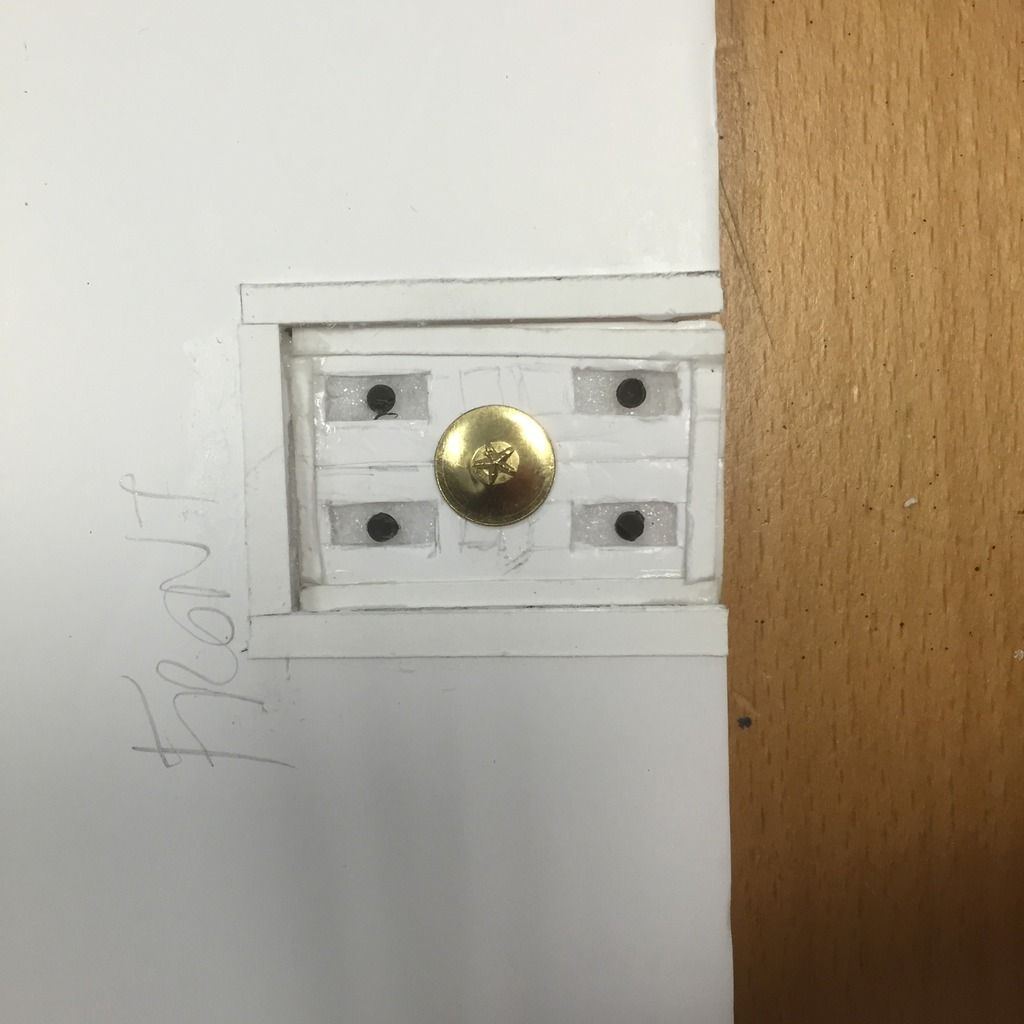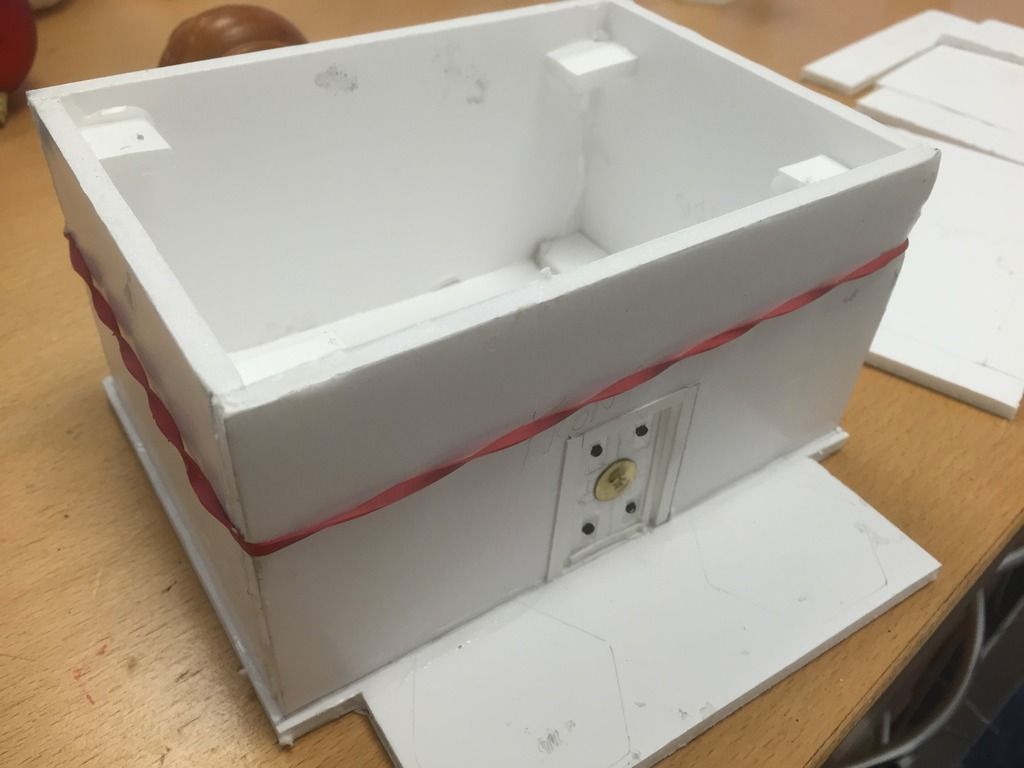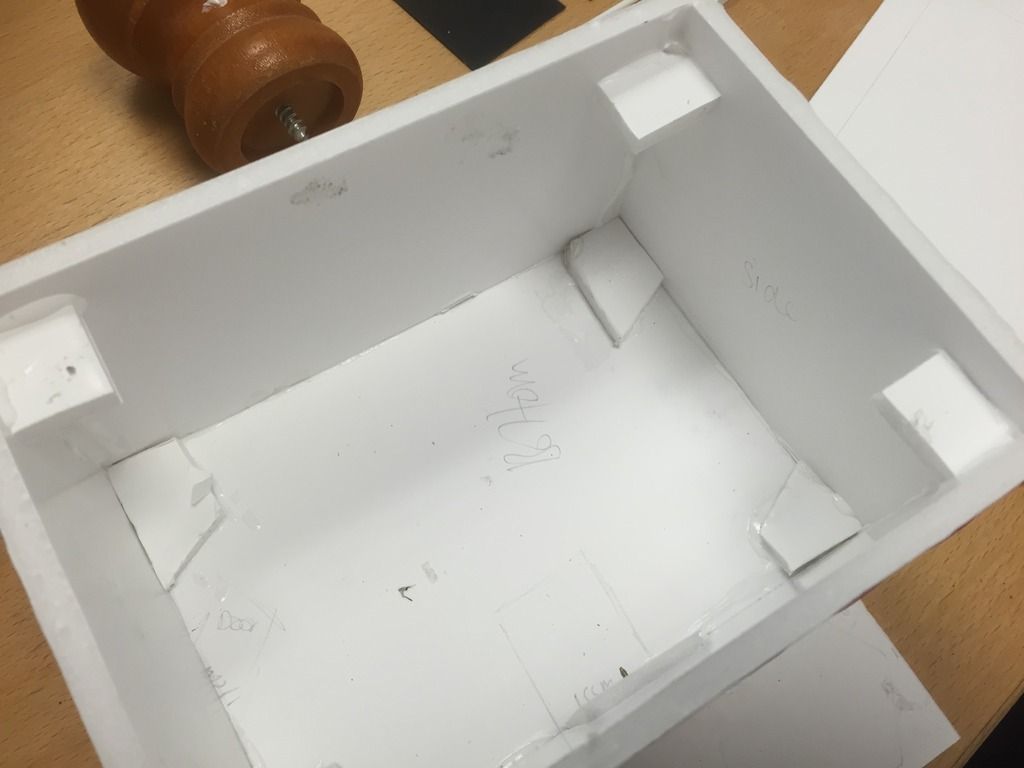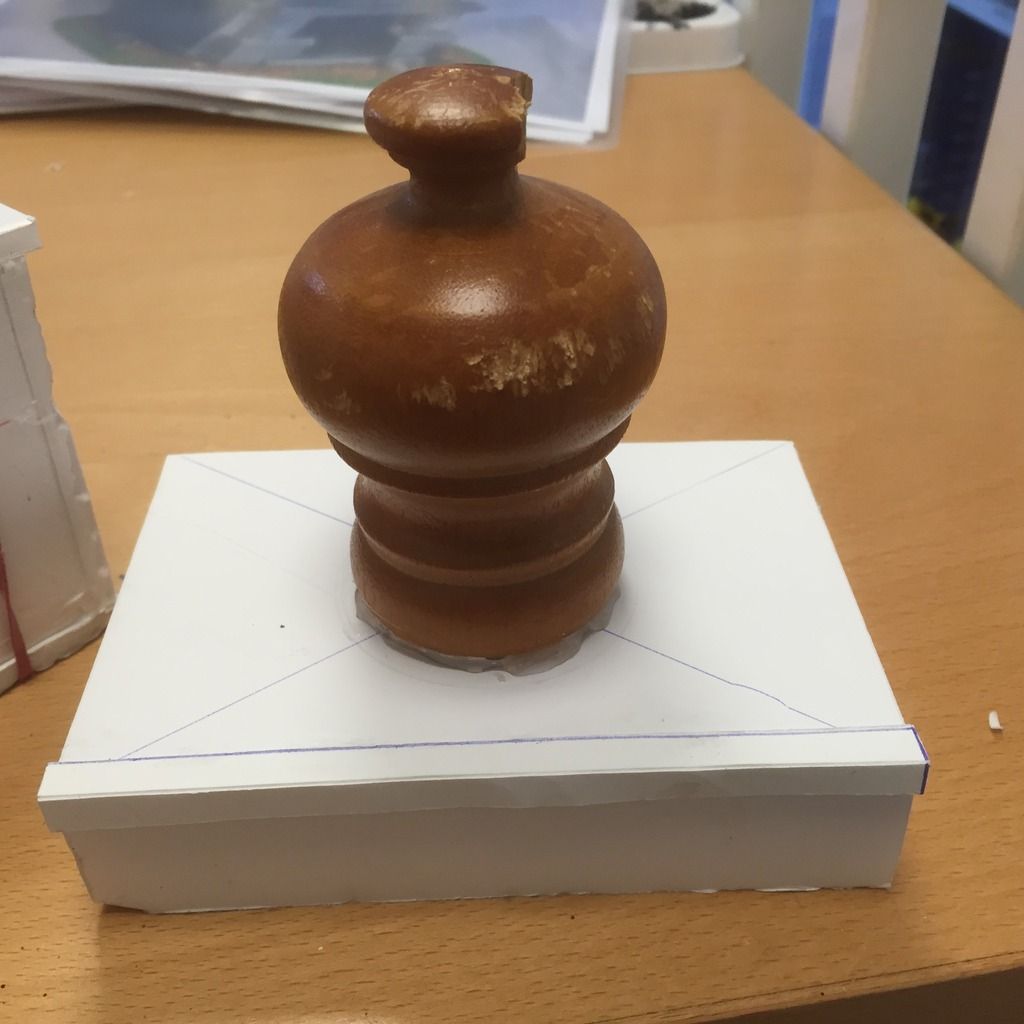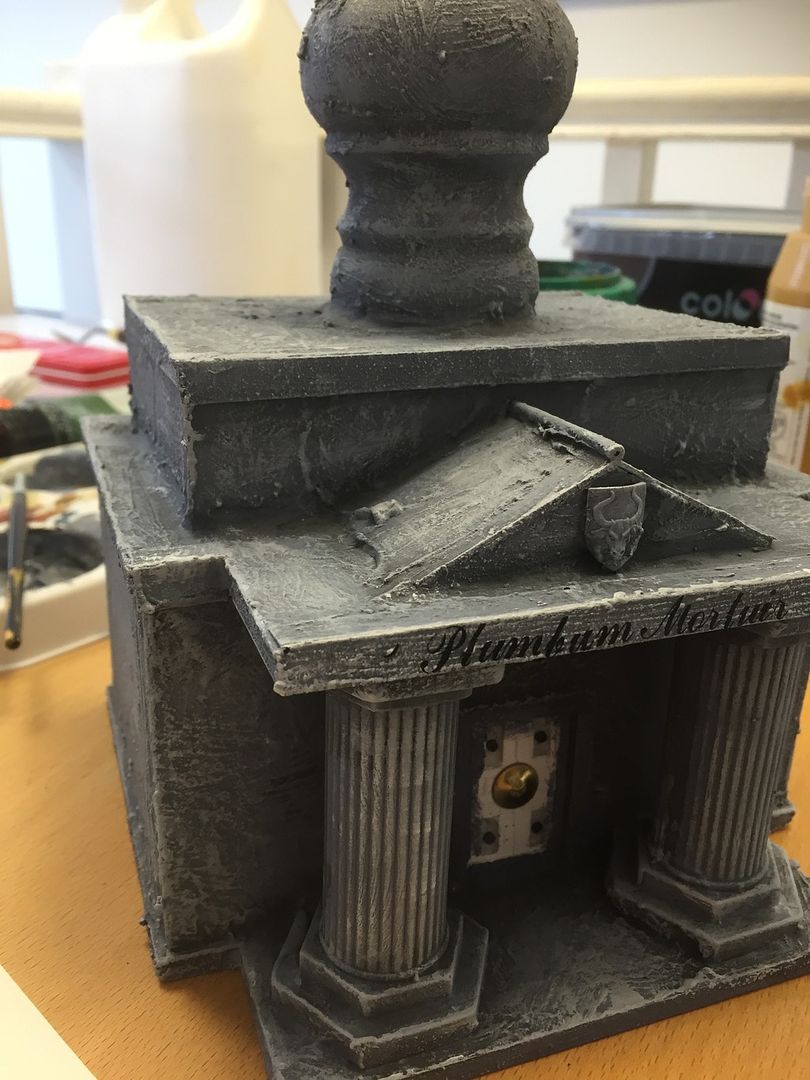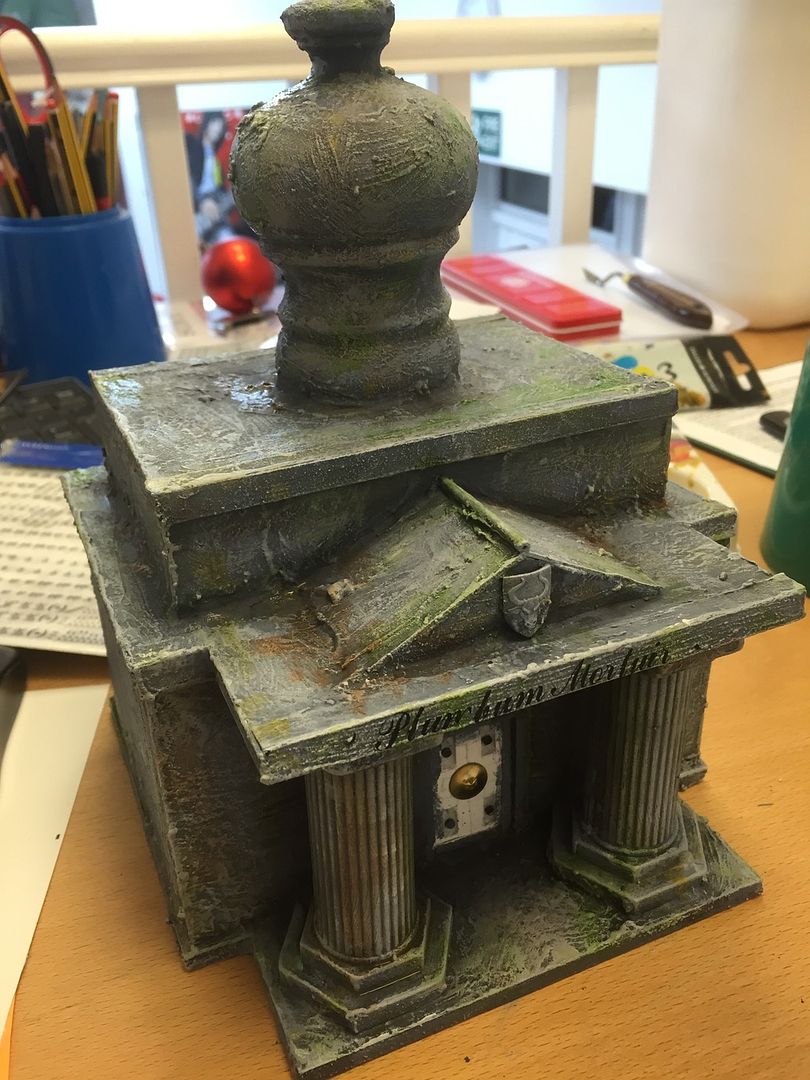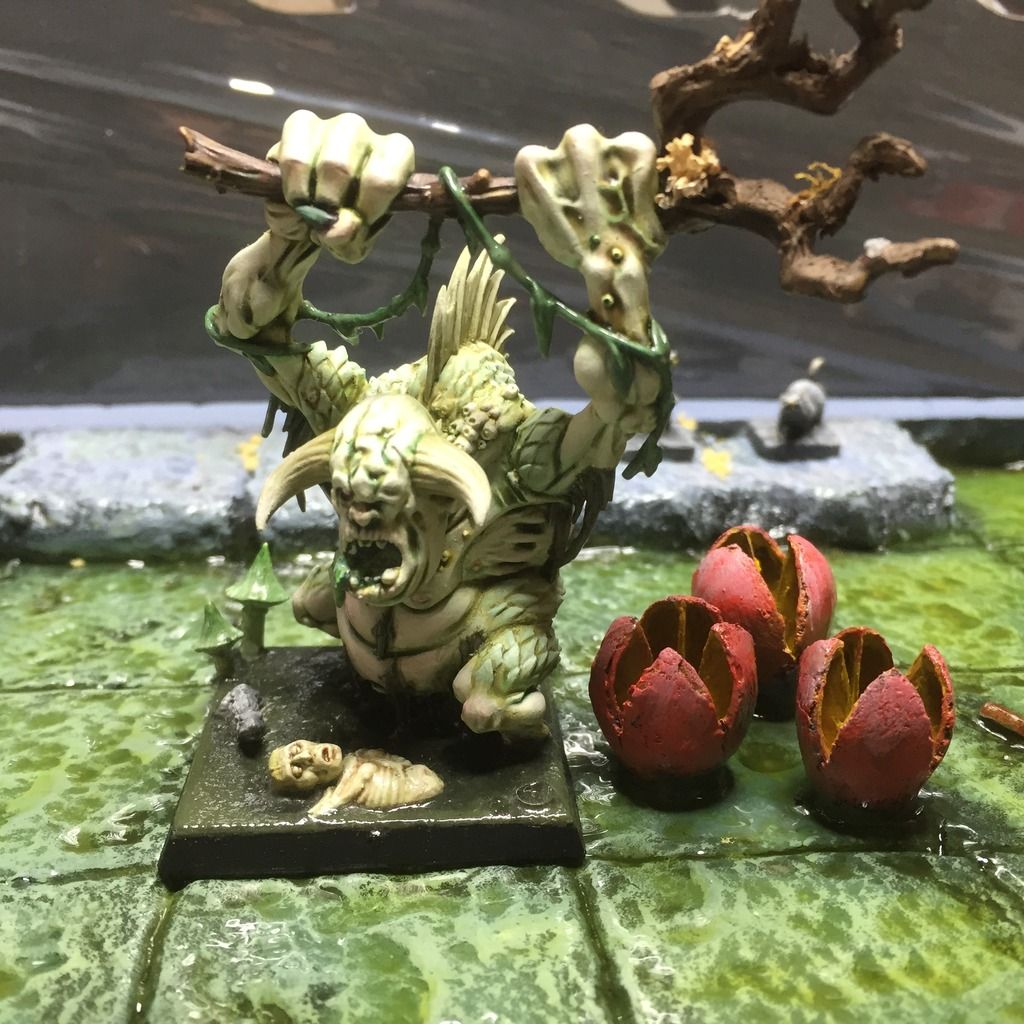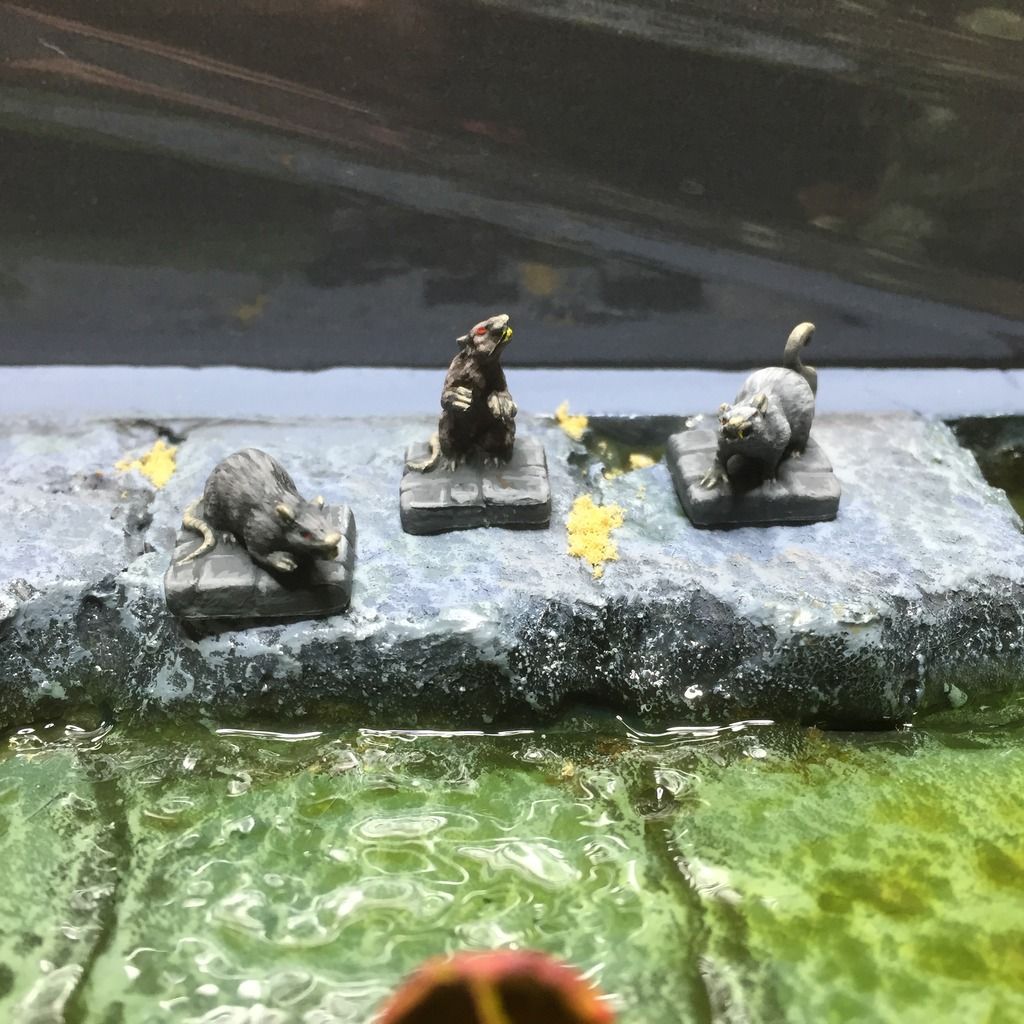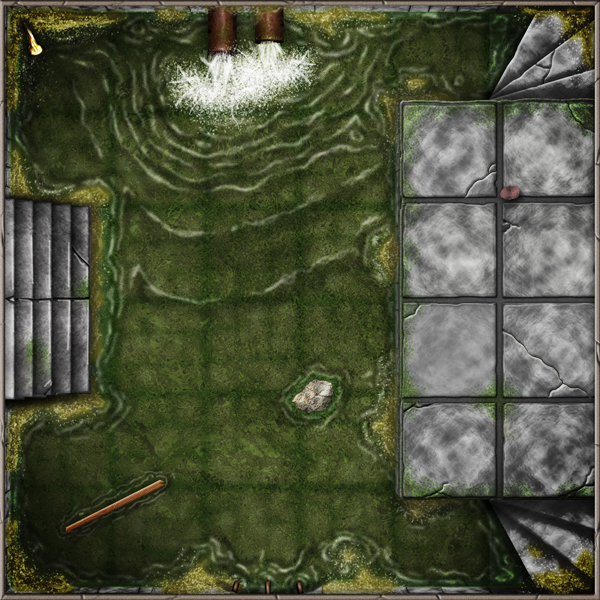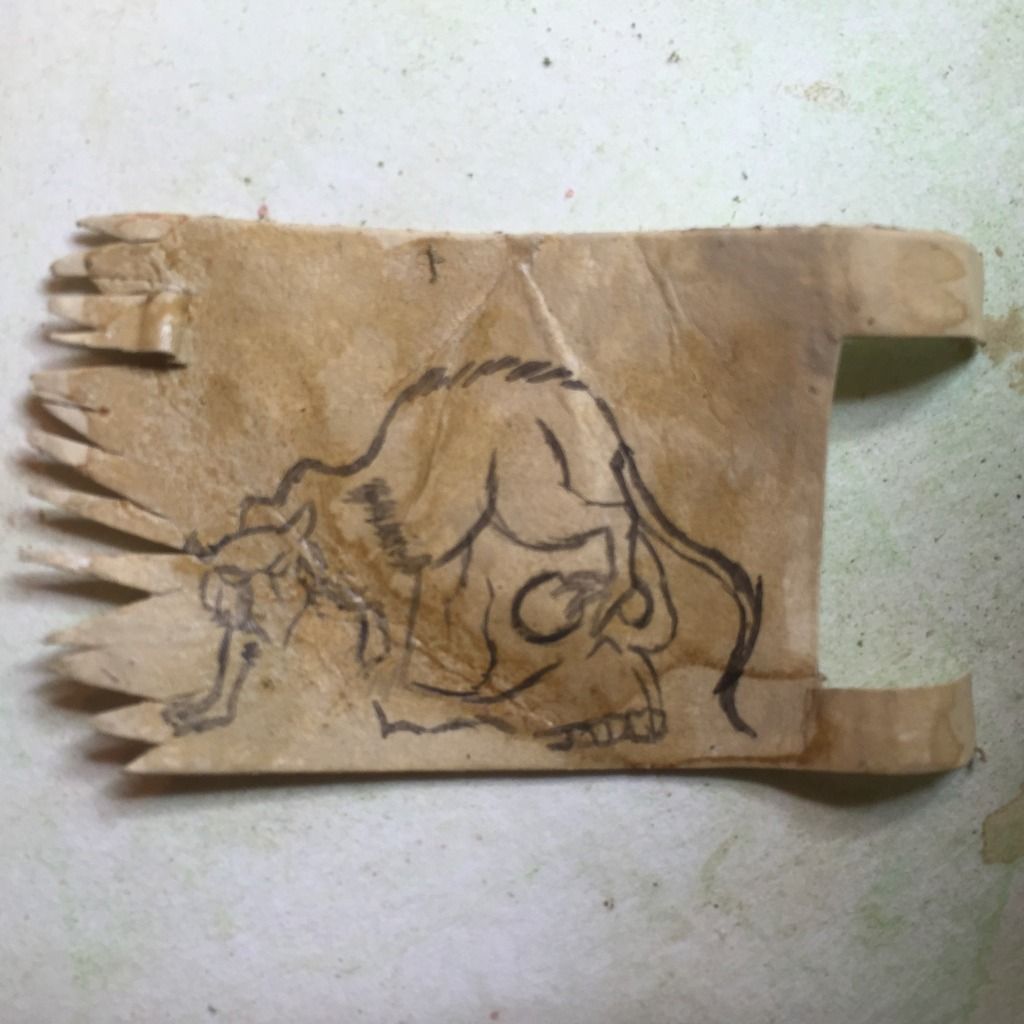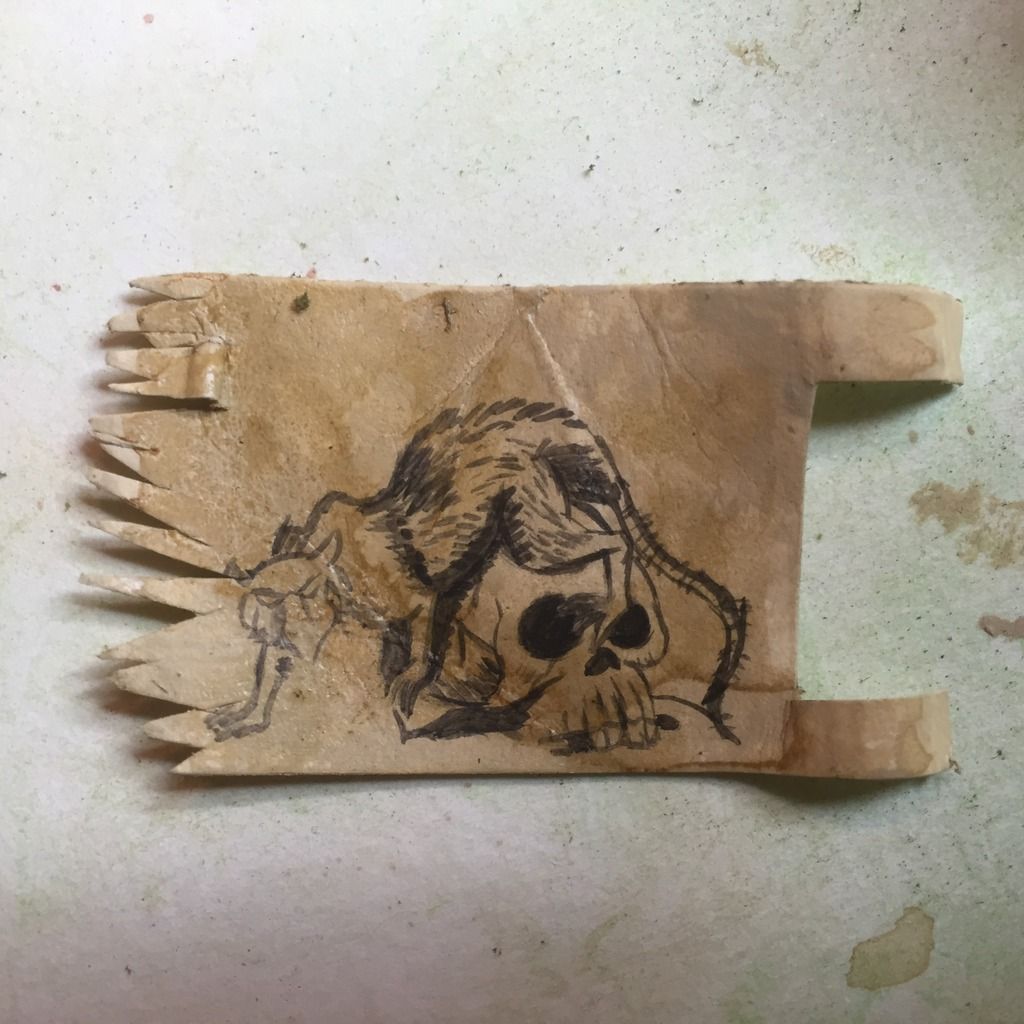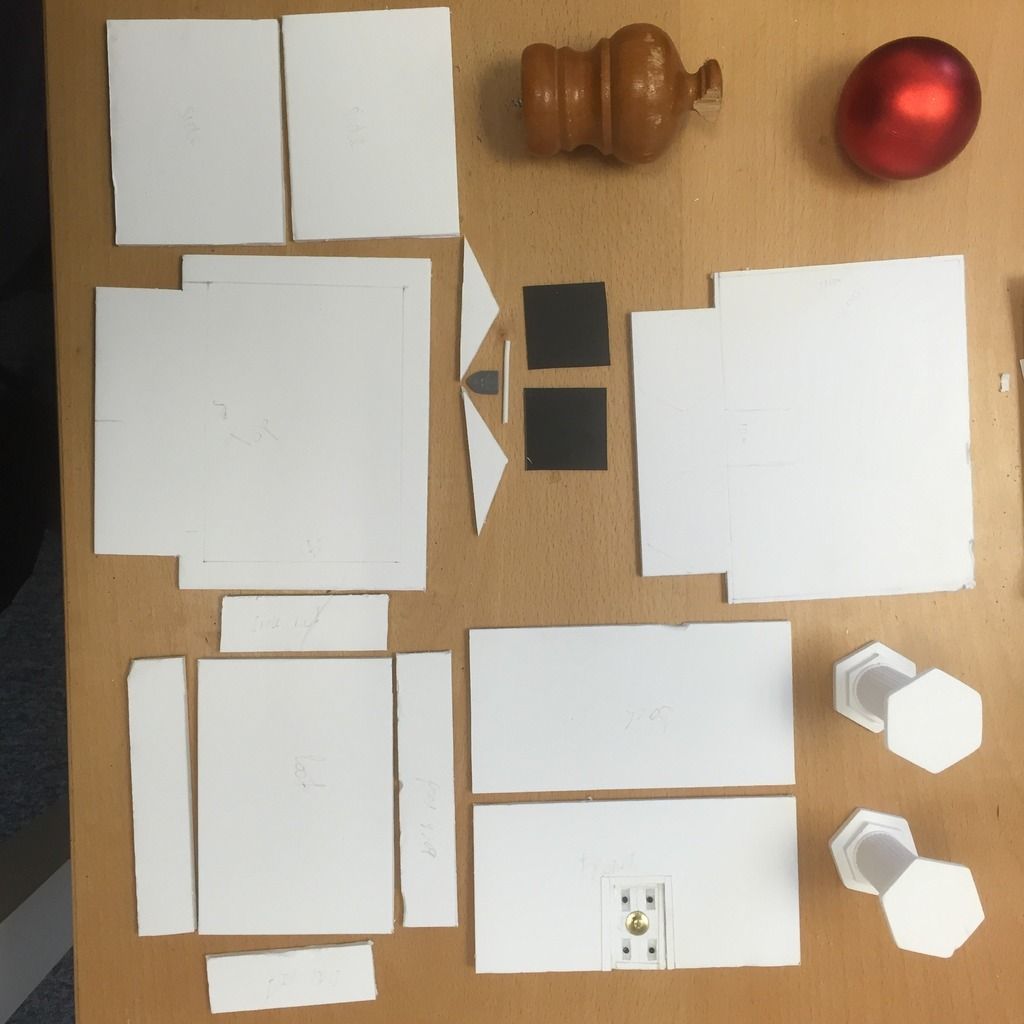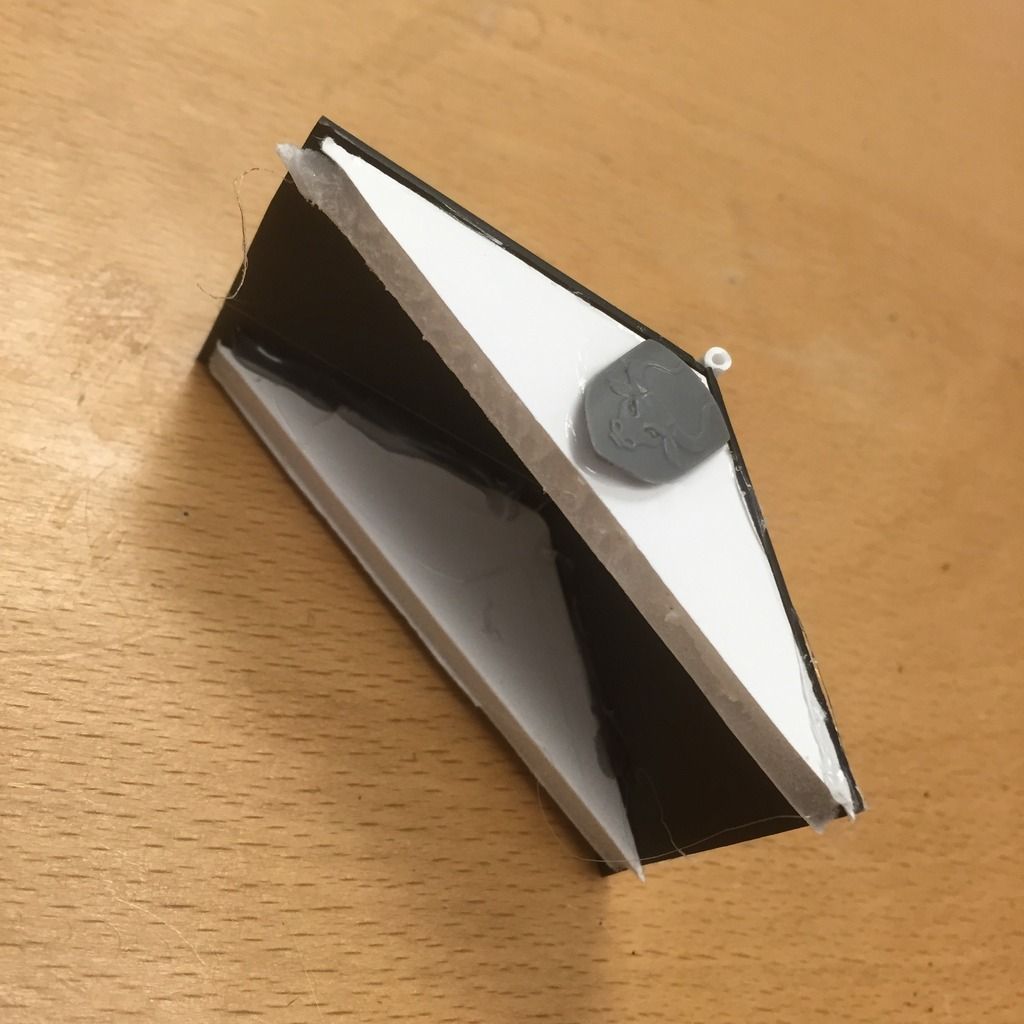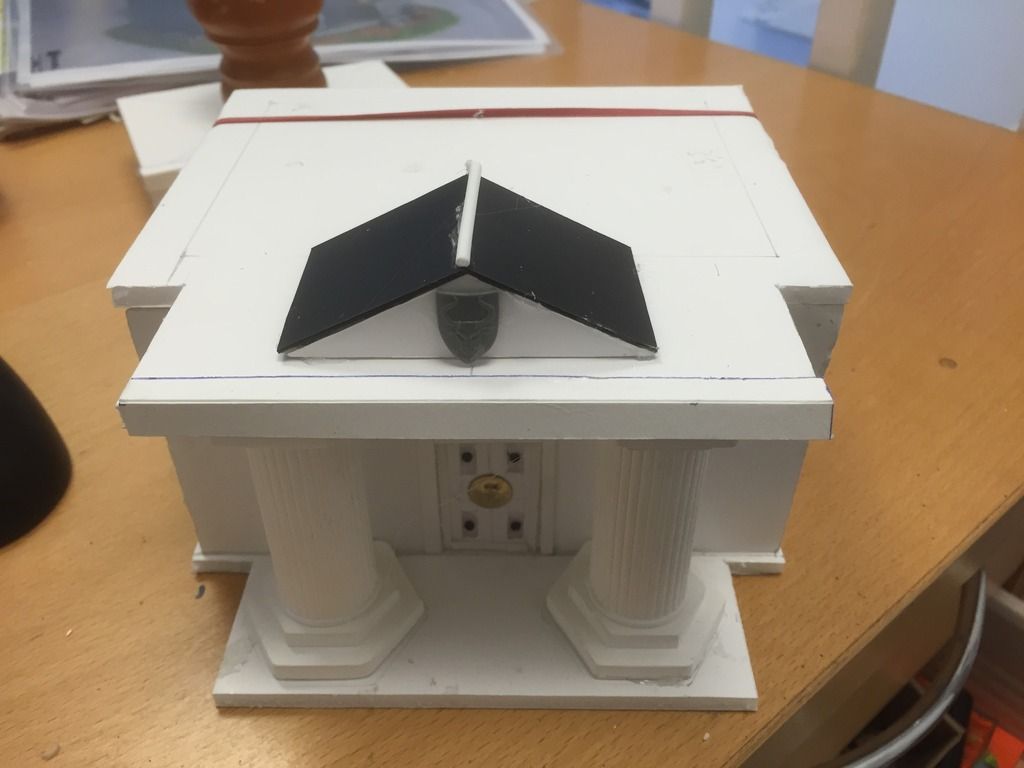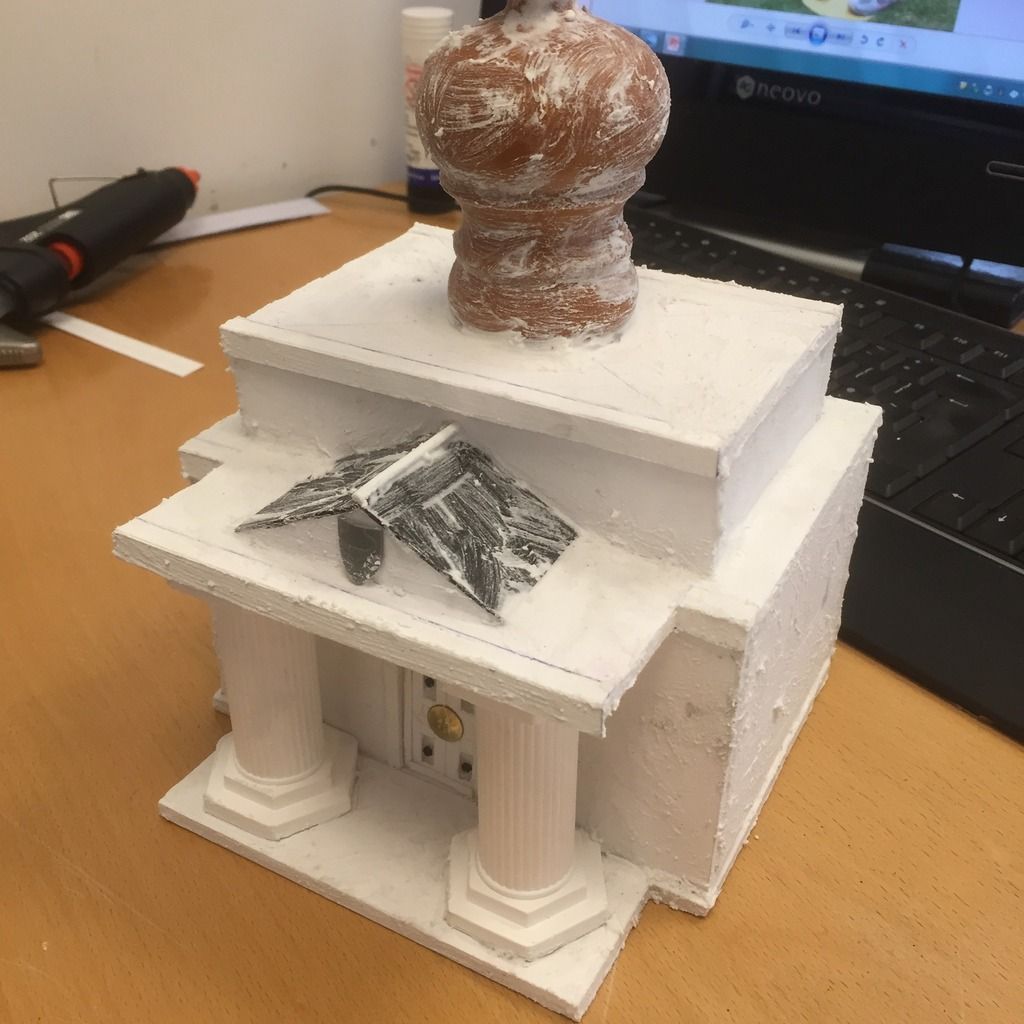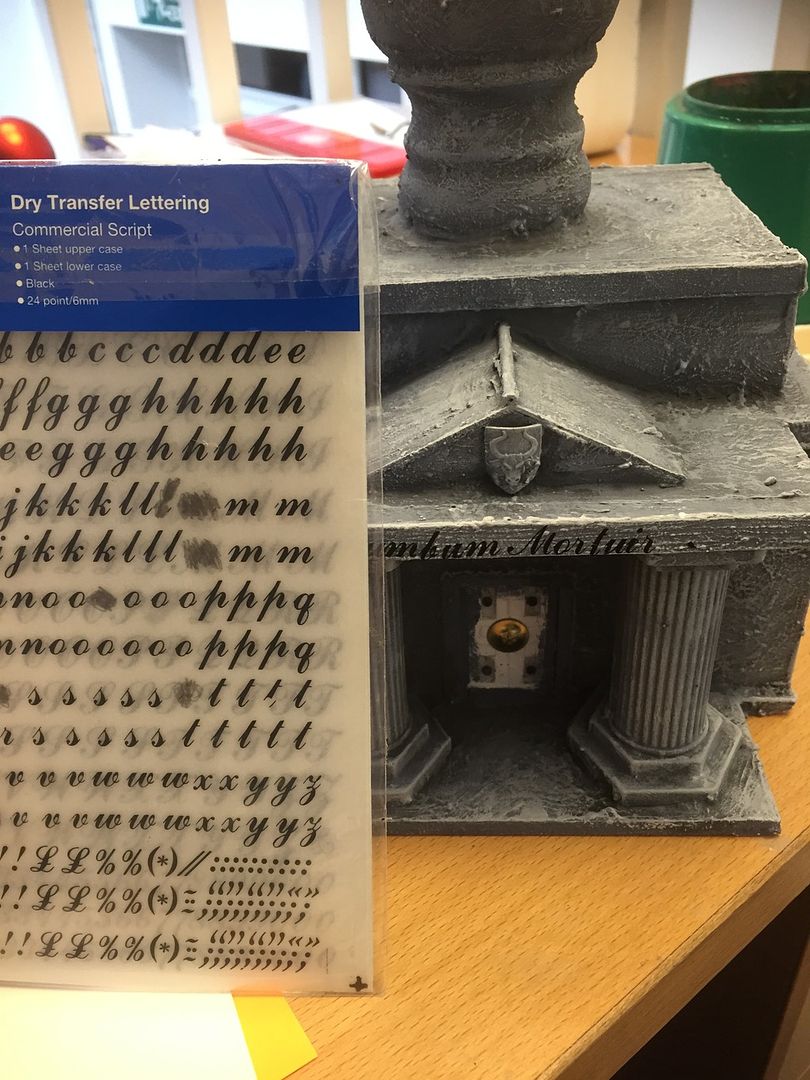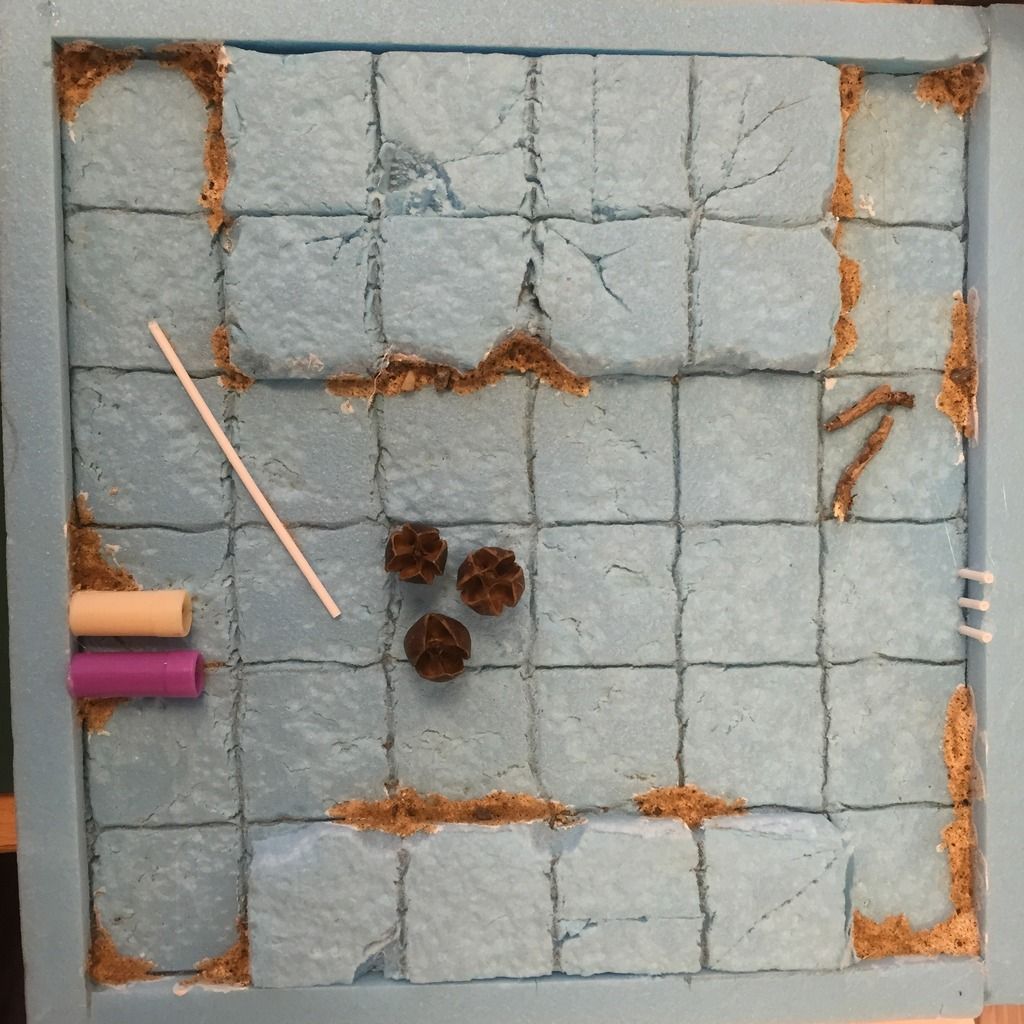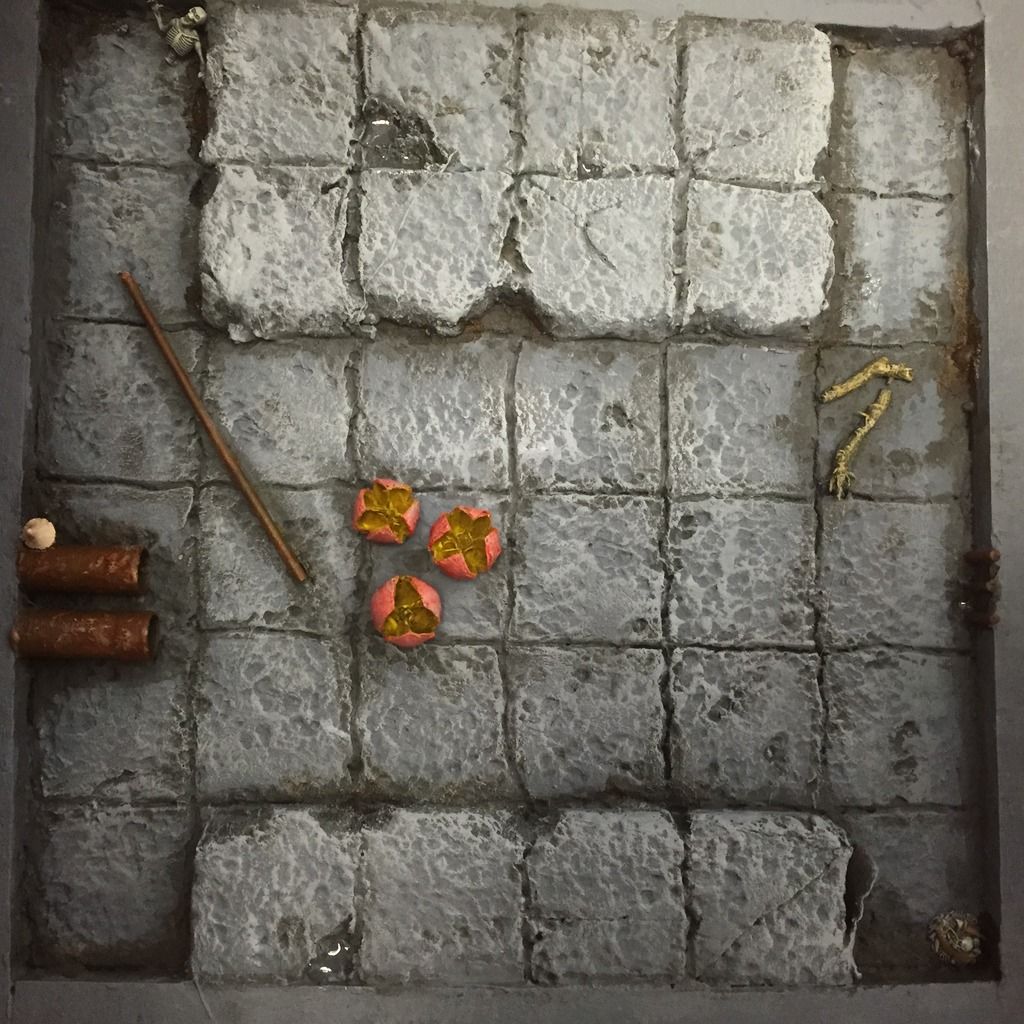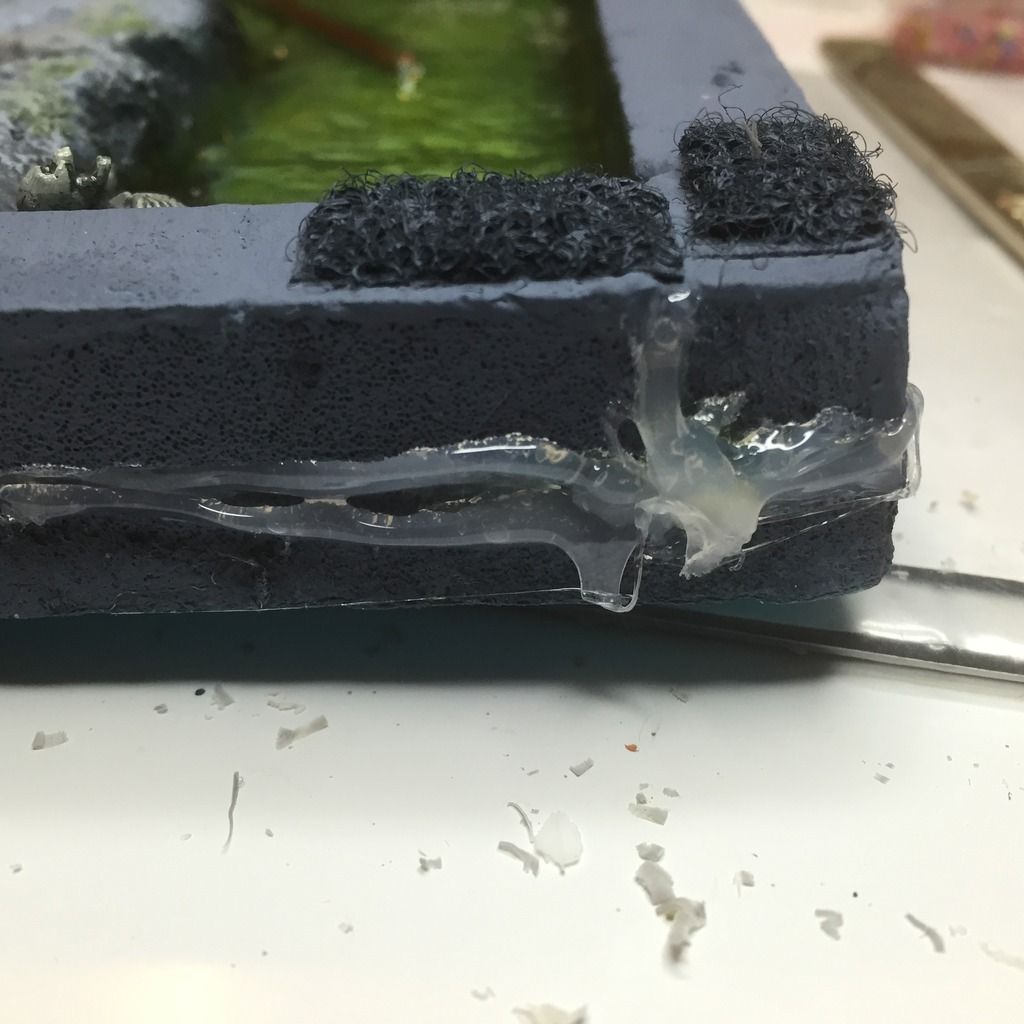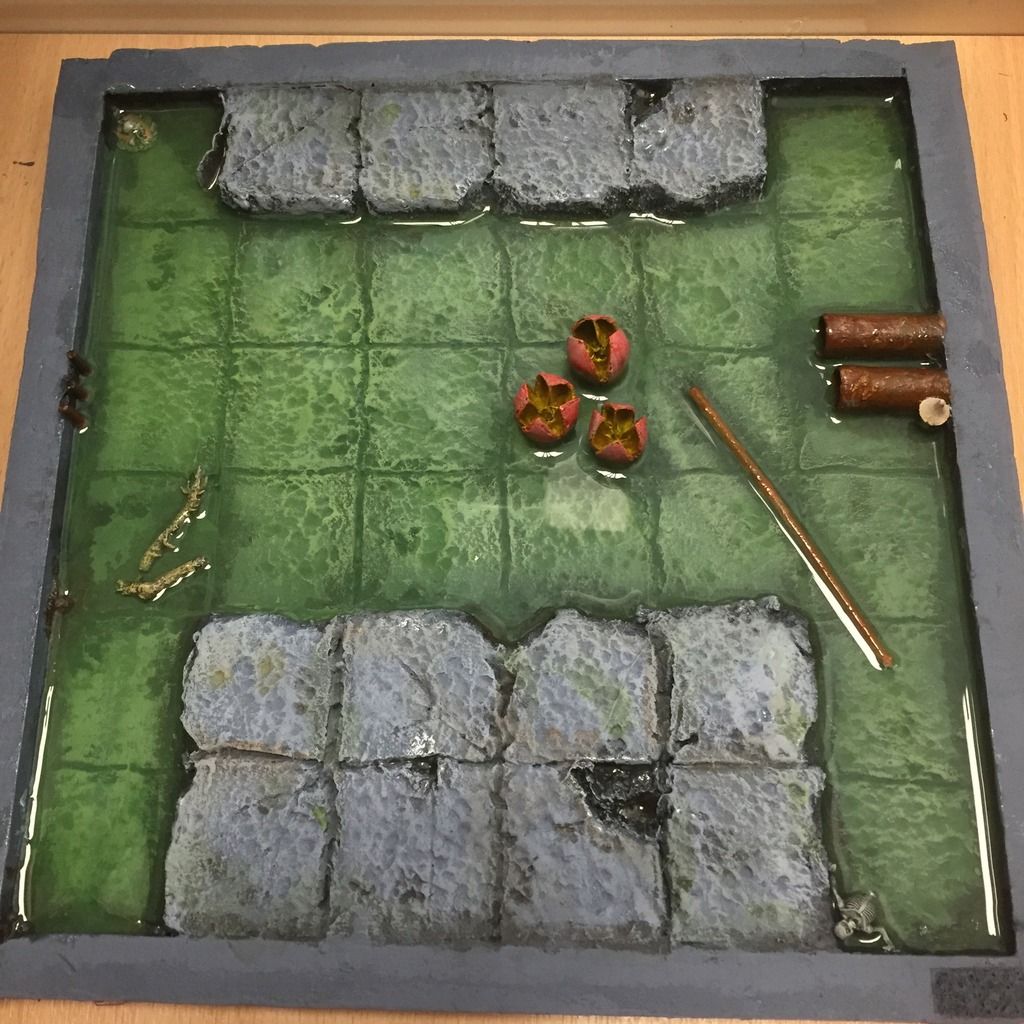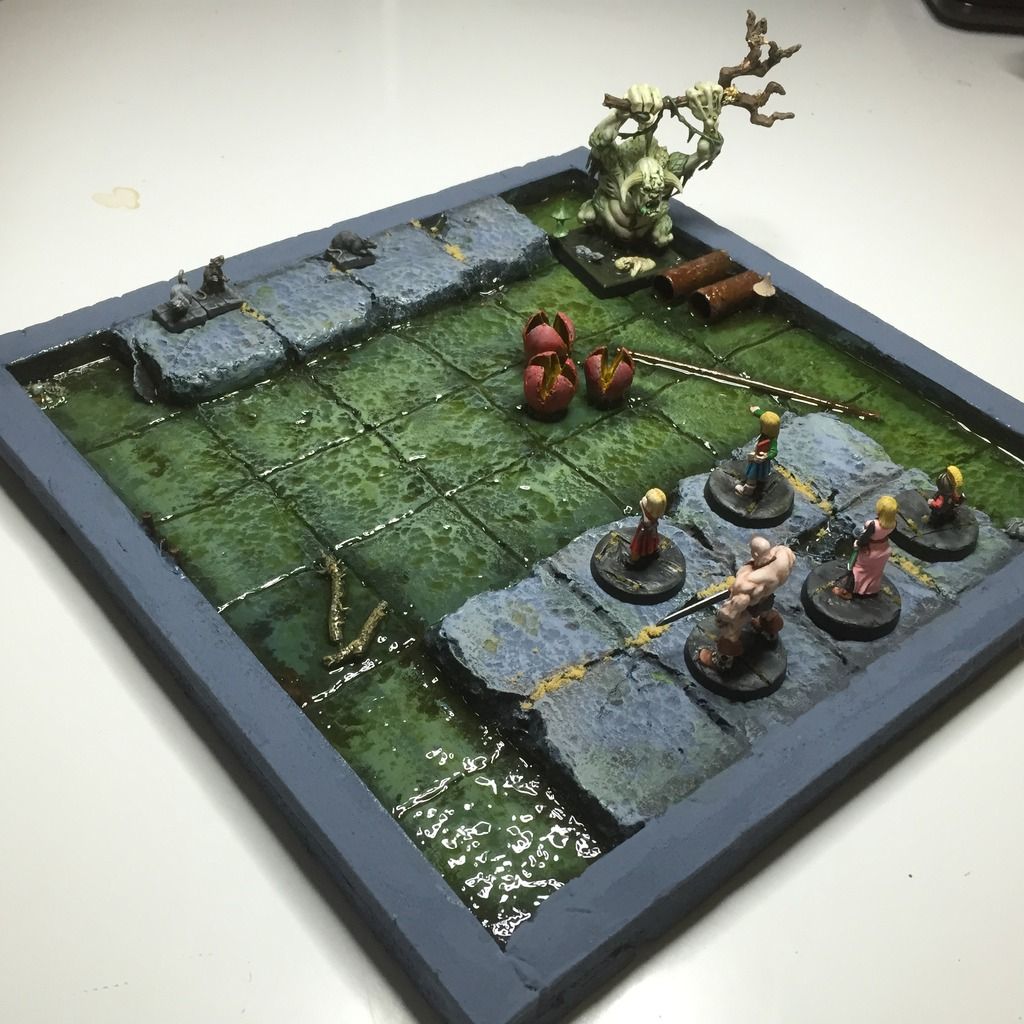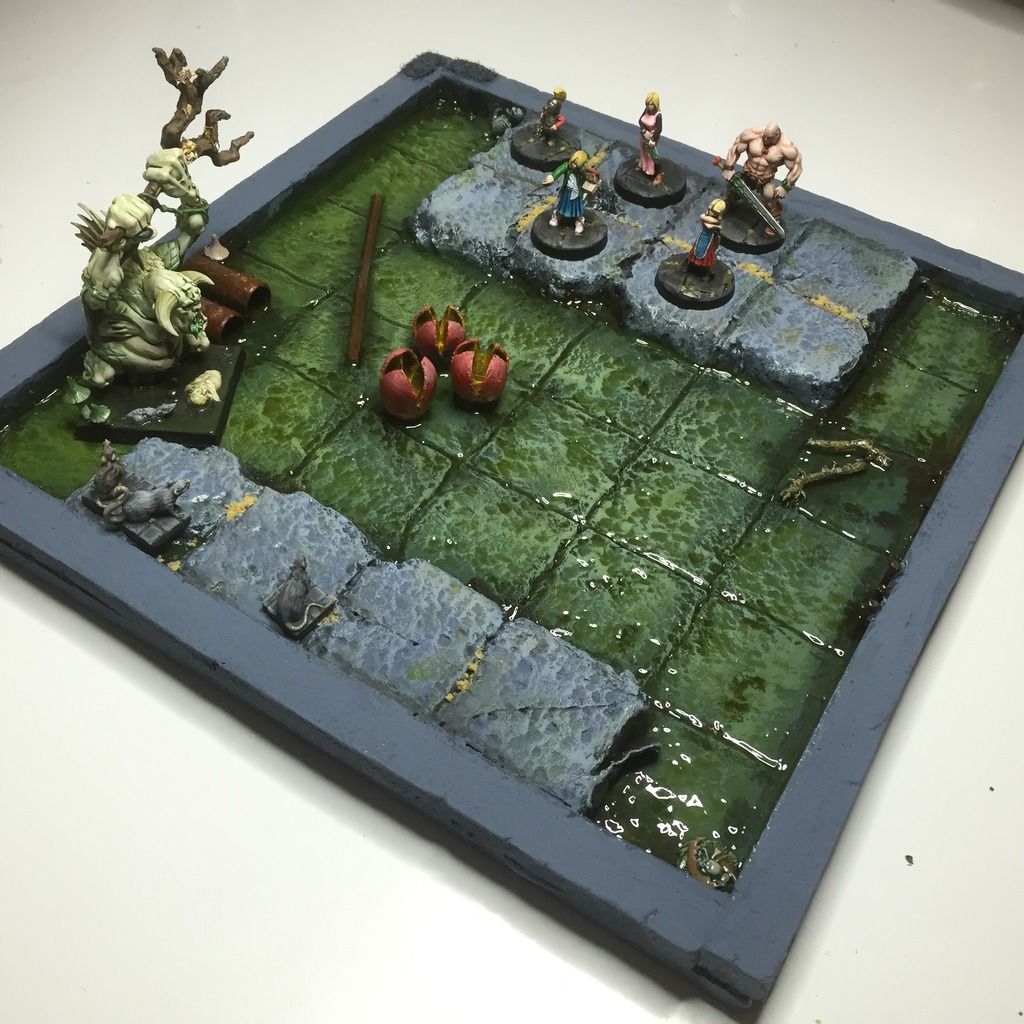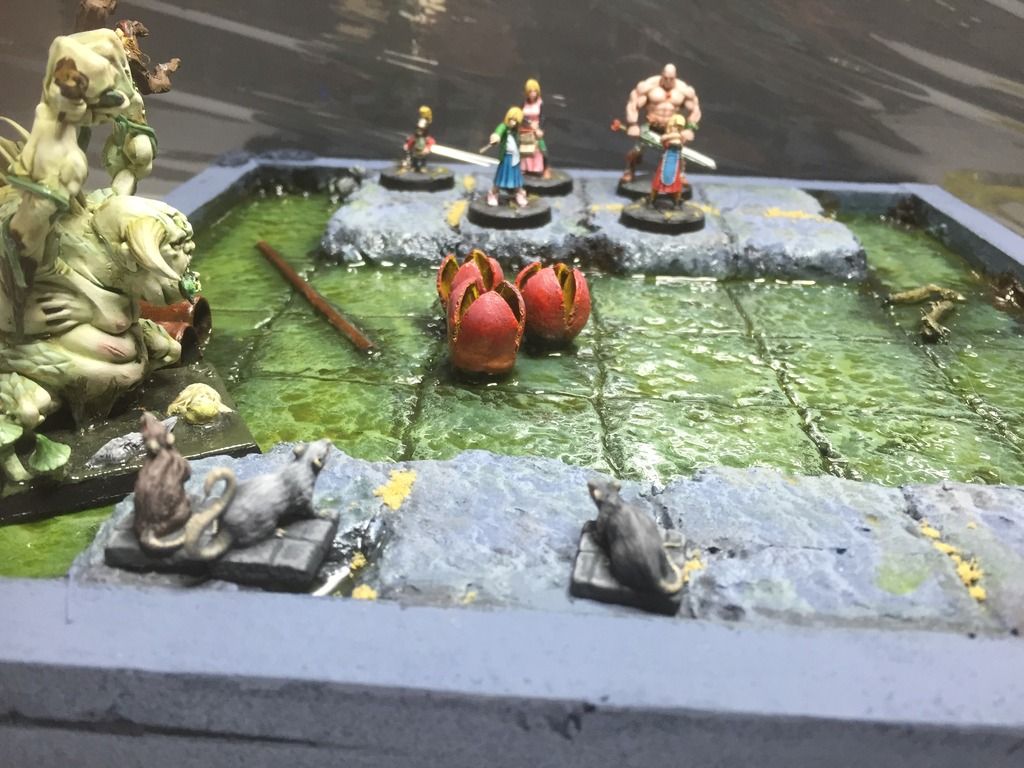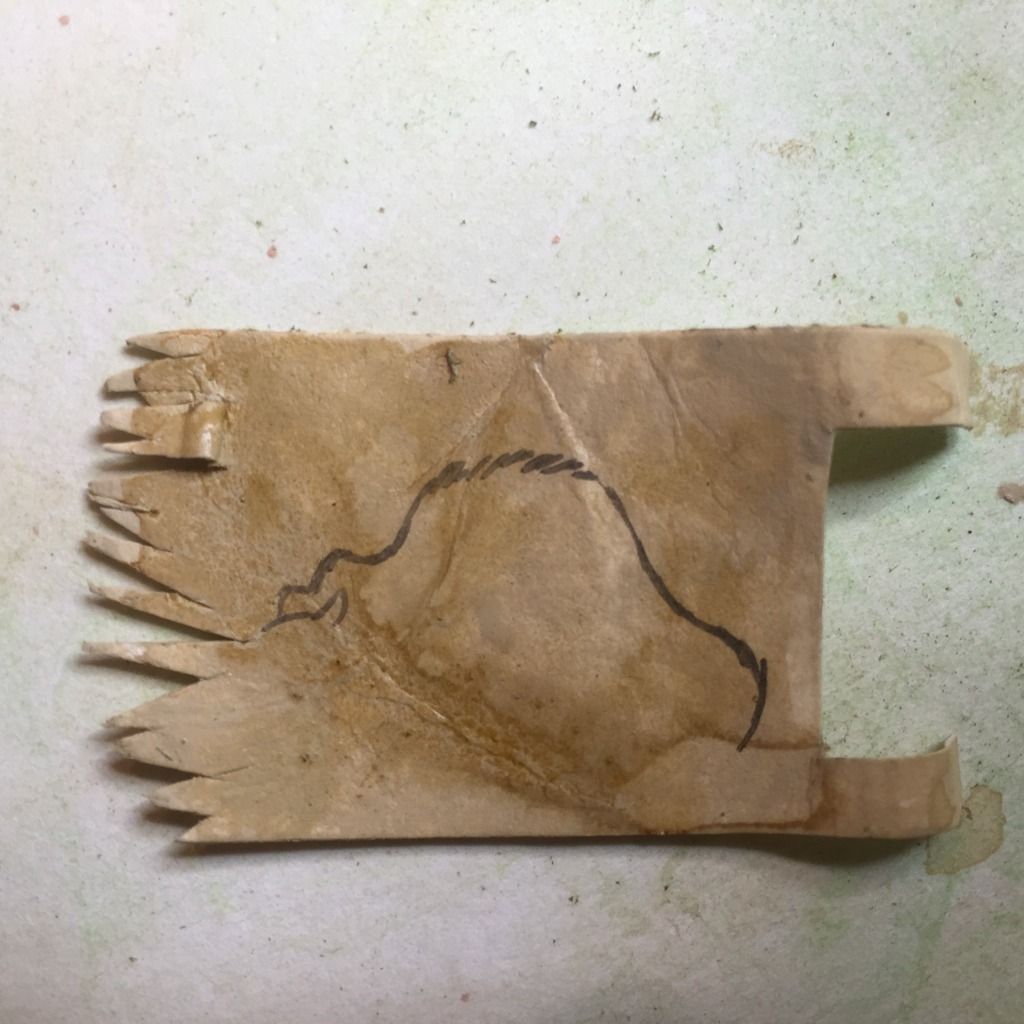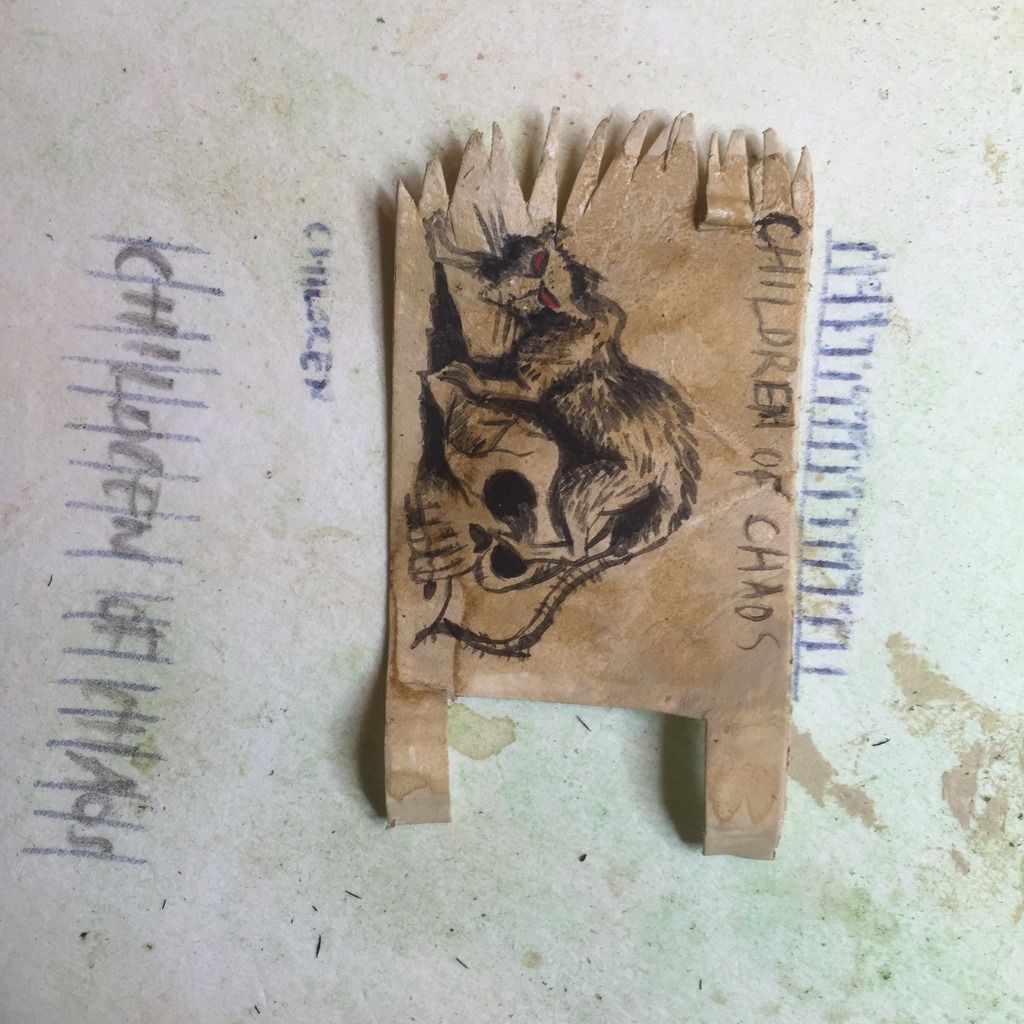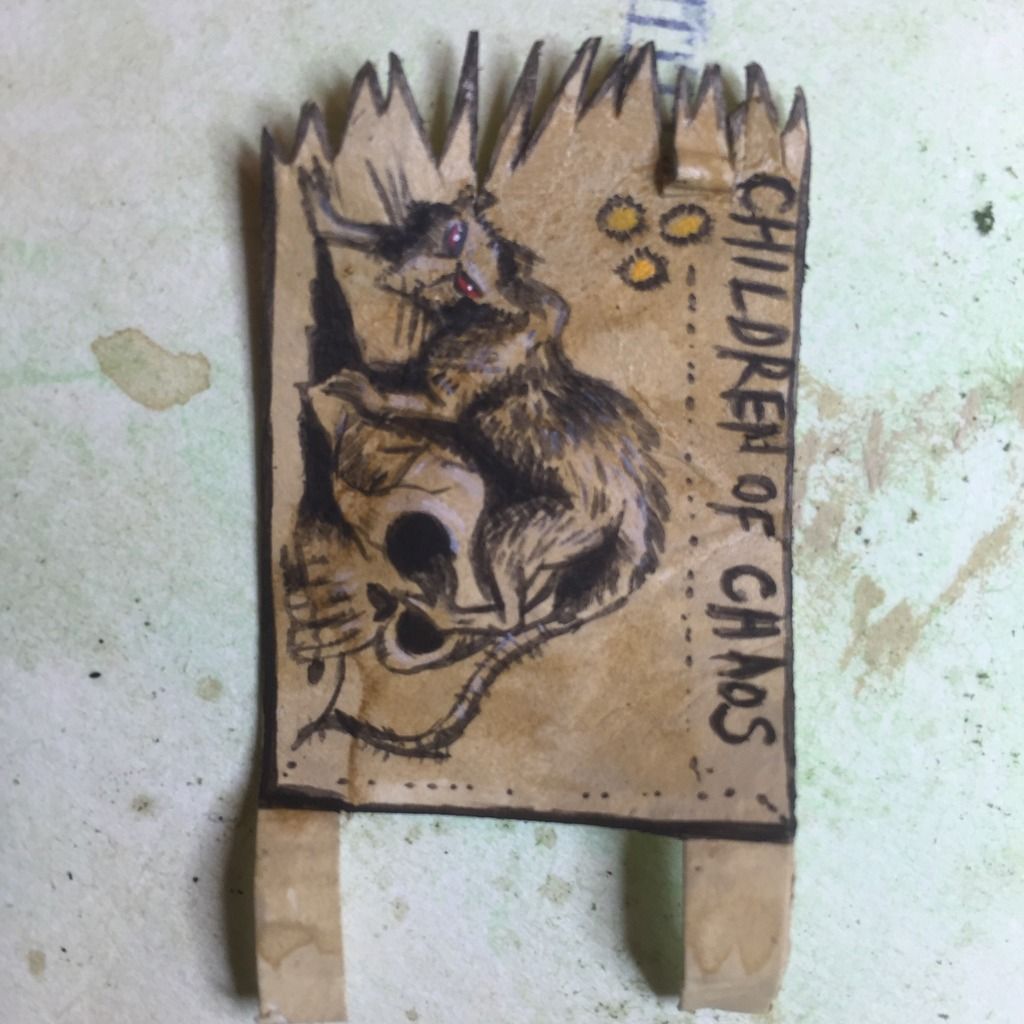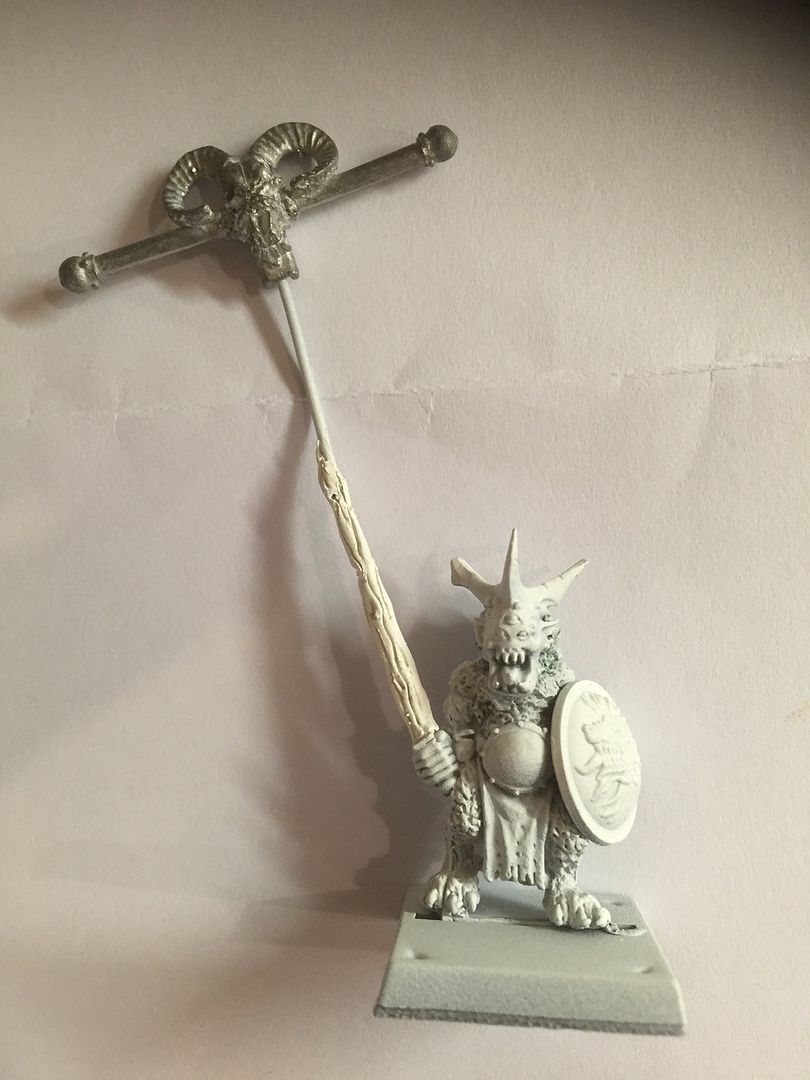For me there is an intrinsic link between the Oldhammer movement, Citadel Miniatures and Fighting Fantasy. Regular readers may have noticed it in other posts, but specifically my last one on
painting banners for my miniatures.

As a kid my entry to all things Fantasy were the brilliant and unique books by Ian Livingstone and Steve Jackson. I cannot recall how I first stumbled upon the series, but I do remember going to the public library after school (the school library did not stock them for whatever reason - perhaps they were not deemed "real" books, or perhaps the Fantasy genre was frowned upon) and loaning out 6 different Fighting Fantasy books at a time. The maximum number of books I could have on loan was 7, so to appease my parents and also my desire to read other things, my final book was some sort of novel. Eager to devour these Choose Your Own Adventure Books, I would leg it home, the Sainsbury's plastic carrier bag containing the books banging against my legs, eventually getting home and composing myself to start the process. I nicked two dice out of some old Snakes and Ladders board game (always returning them to the tatty box), and grabbed a pencil (with rubber on the end) and some paper. I realised soon into my Fighting Fantasy journey that I would have to draw out maps to help me, but also I also enjoyed doing it too. And what a joy that experience was. Hours and hours and hours with fingers aching from being used as temporary bookmarks at those important decisions/crossroads, whilst at the same time trying to turn the pages, draw an accurate map and write down my collection of found objects. It very rarely became tedious. And I would return to the library a few weeks later to return my books and head over to the section which housed those distinctive green spined, Fighting Fantasy tomes. When I had read (but not always completed - I especially remember Creature of Havoc being a bitch and becoming my nemesis) the library's entire stock, I would ask for them to have others delivered from another branch. Not all the books were great and I would soon work out which were a bit duff. Interestingly the internet now agrees with those adolescent opinions of mine.
Back in the late 80's I remember telling my mates about these books and we started to share our books, our journeys and decisions and soon we were all hooked on them and forming some sort of club at school lunch times. I remember myself and two mates also tried writing our own version - we started off drawing out a large map of the city our story was played out in (I cannot remember it's name now, but it was a very detailed map). We actually began the process of writing the book and allocating passages of text to different numbers and I even completed a few little sketches to break up the passages of words in the manner of the originals; but something stopped us from going much further - the discovery of Games Workshop. Oh and a "grown up" book called Lord of the Rings that also helped shape my love of Fantasy.
After my early days of FF came my first planned visit to GW. I had a chance meeting with one prior to this when I was about 10 (1986) and on a school trip to learn about the Vikings in York. During an excursion into the city center to spend some of our pocket money, a fellow schoolboy saw the GW shopfront and told us how cool they were as his brother had some of their models. In we went and straight away I was in awe of the extent of models on display. I had messed around with Airfix models and plastic glue and enamels, so I was already into model making, but I had never been into a shop that was so entirely dedicated to models and an entire miniature world. After much searching around I bought my first ever blister pack - some Slaan troglydytes, my purchase decision being based purely upon models that looked evil and monster like (and within my limited budget):
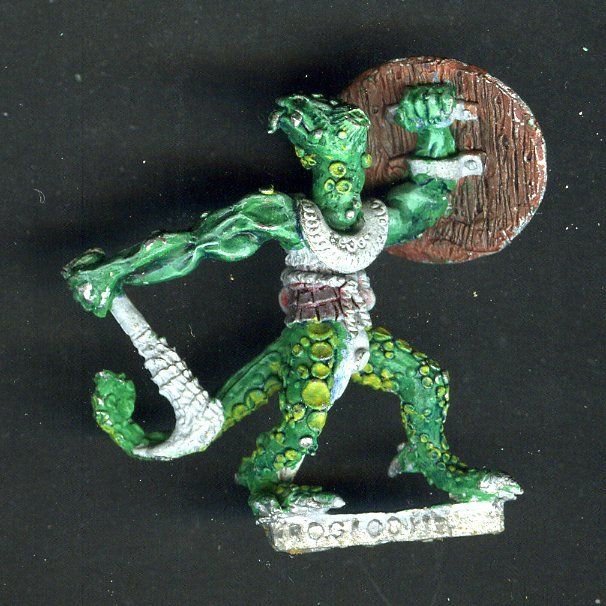
I had no idea at the time of what they were, but when I got home I opened them up, affixed them to their slotta bases and slathered them in a range of wonderfully smelling, glossy enamel paints. They were soon forgotten though and lost in the mists of time. I digress.
It was all about this first planned trip with a fellow Fighting Fantasy fanatic, on the train to GW Reading, where it all began - the devouring of White Dwarf magazines, the endless lists of what I would purchase on my next excursion, the slowly growing collection of Orc and Goblin models, paints, primers, scenery etc. It became obsessive. There are great similarities now. I was soon hooked; here were models that were full of character, that resembled the descriptions of monsters and adventurers as written by JRR Tolkien, they were familiar in pose and dynamism from the illustrations of the various Fighting Fantasy illustrators AND I could play with them to recreate scenes and narratives from Fighting Fantasy and on a larger scale, always the hope that I could scale up to army size in the style of Lord of the Rings. It was a perfect collaboration and still, to this day is.
All of the above still apply, I love FF and if not so much the GW of now, then certainly their elder, distant relative. Now as a 39 year old bloke, this is in large parts, evidence of misty nostalgia,
but they do remain excellent books, that engage me through the writing, the story and my involvement in making decisions. I can't wait to share them with my son and I hope he becomes an avid reader too and that he can appreciate a good illustration. Because they are wonderfully illustrated by a range of artists, their styles becoming synonymous to the artist chosen to illustrate and those styles became more and more familiar as I thumbed through the pages of different books as a teenager. The the cover art too being iconic, but to a greater degree the illustrations of the monsters, the scenes and those lovely little motifs which interspersed the chunks of texts.
Which brings me to the crux of this ramble. I now combine these two inspirations of mine (Fighting Fantasy and Citadel miniatures) to create an Oldhammer vibe and this is largley through recreating miniature versions of Fighting Fantasy illustrations using, on the whole old GW miniatures. I see this as my more mature relationship with the hobby, I certainly have more developed ideas as to what I want to do with my models and my more evolved modelling/painting skills! So here's an overview of how I've combined these influences over the past 18 months:
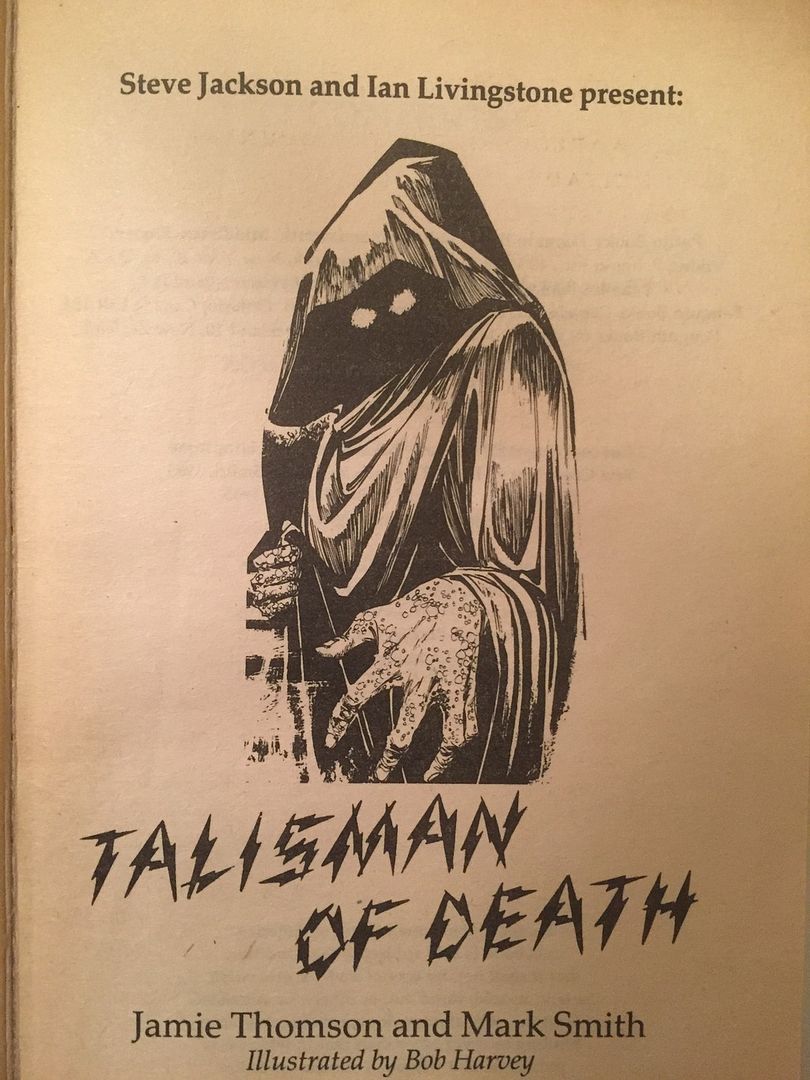 |
| Bob Harvey's great inside cover illustration for Talisman of Death. |
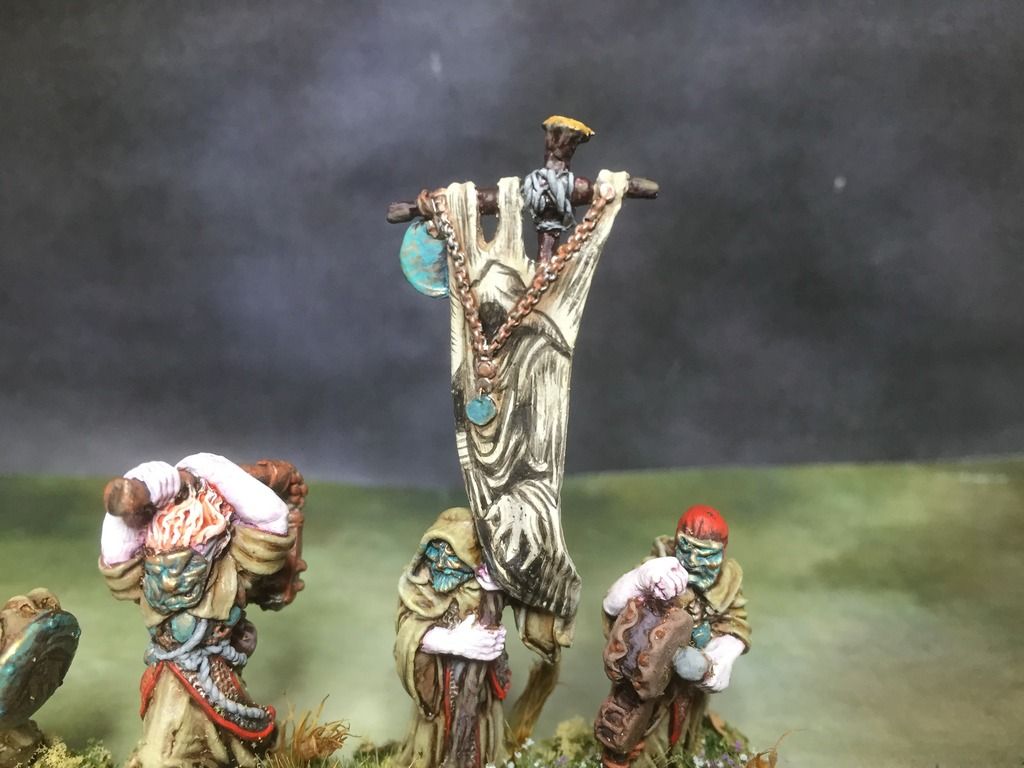 |
| Which I used for the banner on my Cultists. |
 |
| Ian Millar's iconic cover illustration for Freeway Fighter |
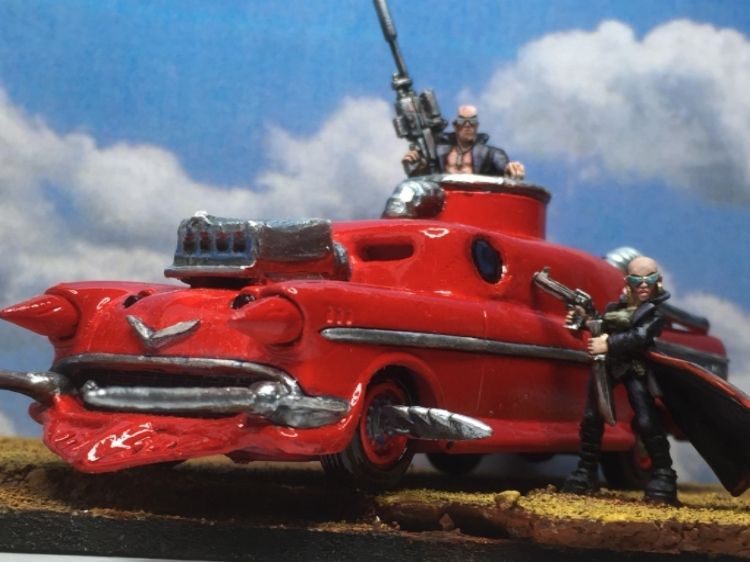 |
| And here's my recreation using an 1;43 model car and some Heresy miniatures |
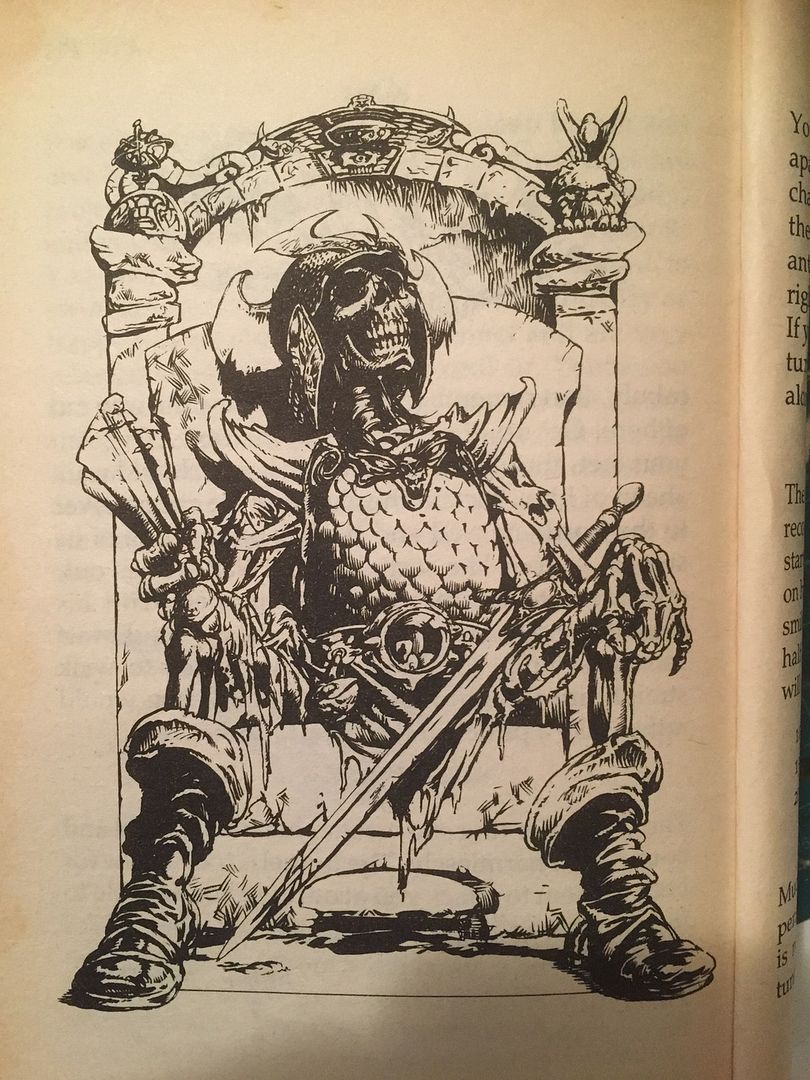 |
| Ian McCaig's classic illustration from Deathtrap Dungeon. |
 |
| And here's what I created with a Mantic skeleton and some balsa wood |
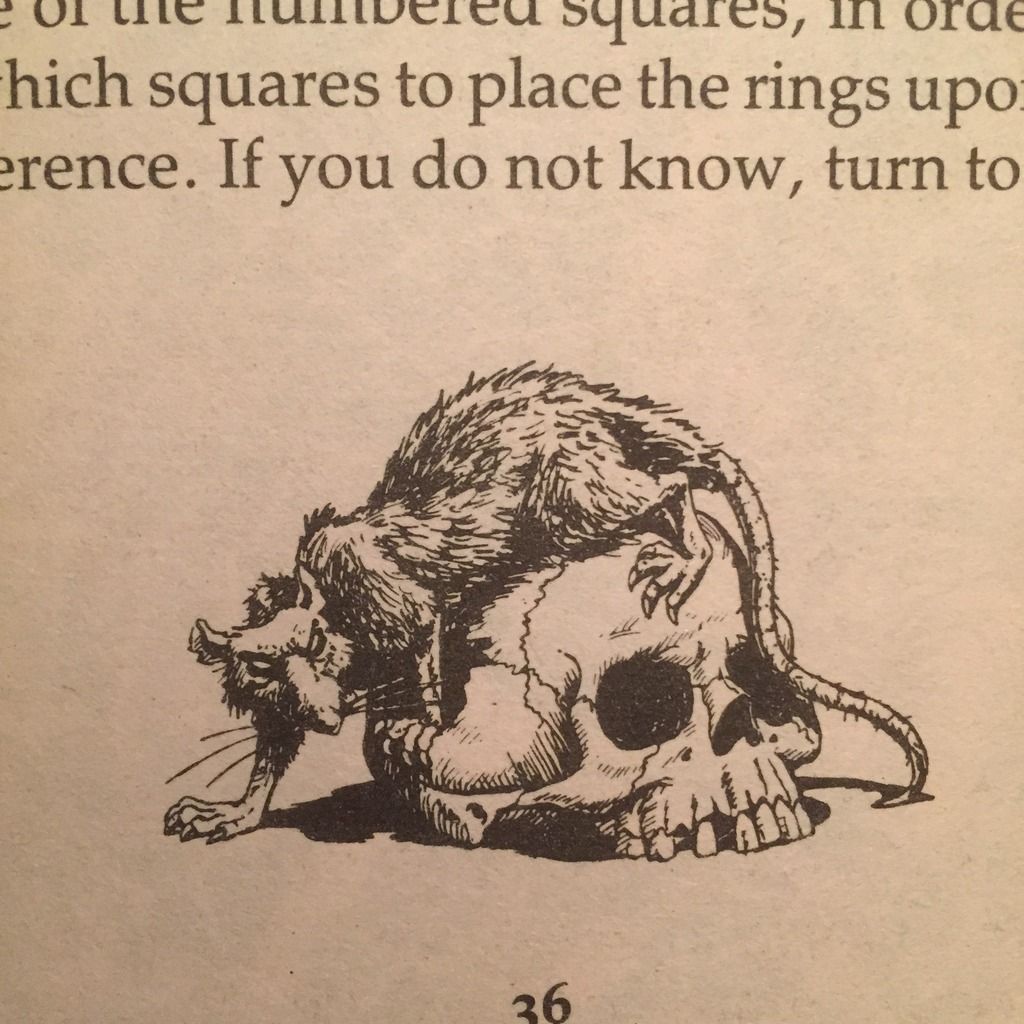 |
| Brian William's lovely little illustration that is found on multiple pages of the Trial of Champions, breaking up the text |
 |
| And here's where I used it on the banner for my bitzbox warband |
And some WIP's:
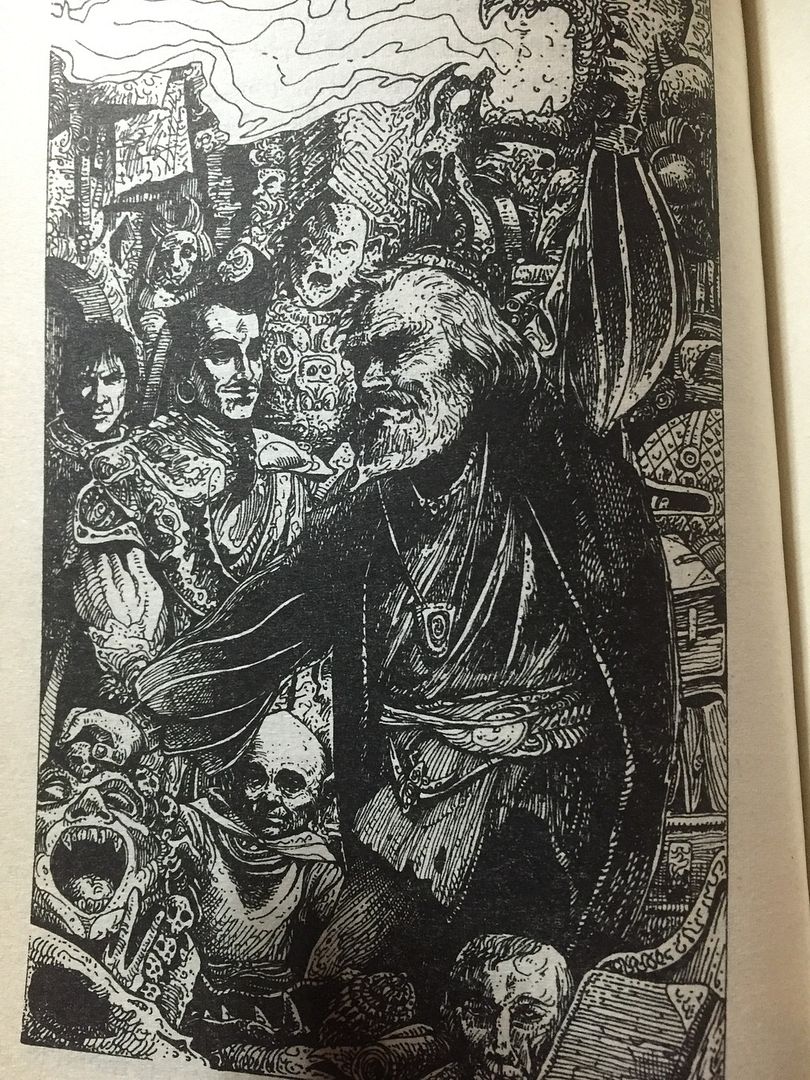 |
| Russ Nicholson illustrated the FF novel, The Trolltooth Wars and here you can see the main characters from the story. |
 |
The five figures I'll be using to create the main characters from the story, plus beast of burden. These will be used for both Dungeon exploring and then expanded into a Frostgrave warband. |
 |
| Ian Millar's familiar style (and of course a tree) which was the cover art for House of Hell |
 |
| And here's the start I've made on recreating it, with a GW plastic tree (to be heavily converted with plastic bitz) and the sorcerer model which I think bares a passing resemblance to the creature in the illustration... |
I've seen lots of people discuss what Oldhammer is and some people becoming quite protective and defensive about their opinions. Ultimately we all have a different perspective, for me it's quite simple. I have a hobby which I love (it takes up way too much of my thinking time - for example I was thinking about this post soon after I was awake this morning and whilst my wife was going through some early morning logistics with me - no that's not a euphemism!) and never enough actual, practical, making and painting time. It's fun, it's nostalgic and it helps me connect with others through the amazing Blogging/Facebook Oldhammer community. I'm not great at that in real life. In fact you guys know more about this passion than anyone else - it's become a bit of a secret affair. My wife's aware but not in any way interested and my current friends have very little knowledge of it at all. The friends I shared my hobby with as a kid - well we've lost touch. So the point of this post? Well I came to a realisation that my passion for this hobby is deep-rooted in my youth and has been re-awakened in my late 30's. The things I've been creating have been deeply inspired by my love of the Fighting Fantasy books, and the Oldhammer community's love of using our favourite models from back in the day to capture that zeitgeist. And of course, in all honesty it's also a chance to create another blog post to show off my achievements with lead, plastic, glue, paints and whatever other bitz and pieces I've needed to create the images of my younger and current imagination and maybe inspire some others too.
